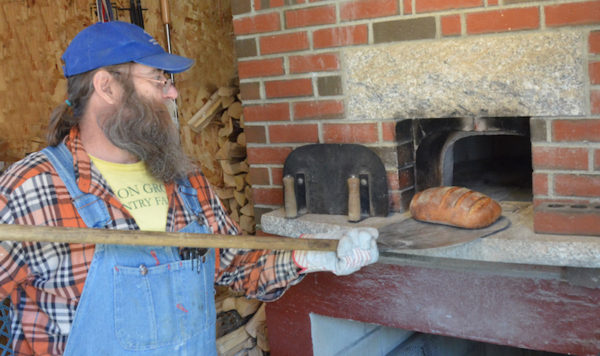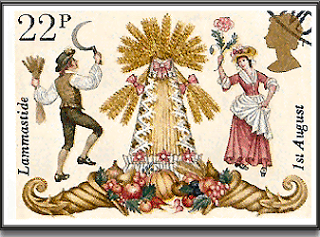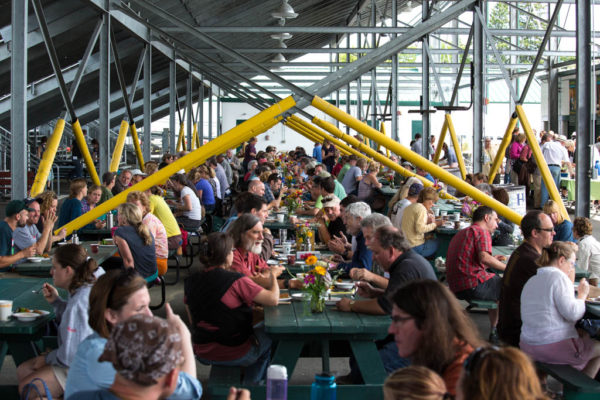Harold “Dusty” Dowse has been baking for a half century. When he’s not being a baker, he’s a Professor Emeritus of Biology and Mathematics at the University of Maine. He brings his background in research and teaching to his study of bakery science and practice.
To put it mildly, Dusty loves to bake. Here are some of his baking-related endeavors:
- He is the Baking Education Coordinator for the Maine Grain Alliance (MGA) and Director of the Maine Artisan Bread Fair (which is happening this week. More on that in a minute.)
- He has been a presenter at the Kneading Conference every year since its inception in 2007. (Also happening this week.)
- He developed a year-round workshop program to help participants develop artisan baking skills and start bakeries.
- He leads a team of bakers that produces bread for the volunteers at the Common Ground Fair, which is put on by the Maine Organic Farmers and Gardeners Association in Unity every September.
- His team bakes bread for MGA to sell at the Bangor Harvest Fest each November
- He has his own artisan bakery, Lammastide Bakers, in his home town of Cambridge, Maine.
If you’re ever in Cambridge, you have to visit Dusty’s bakery. He said the name Lammastide has a special meaning, especially at this time of year.
Everyone knows Halloween, the eve of All Saint’s Day. It is a day of great power and comes to us from pagan times. Its Celtic name is Samhain. Less well-known is Candlemas Day, more commonly called Groundhog’s Day, with the Celtic name of Imbolc. Further down the line is Beltane, equivalent to May Day. At the very bottom of this small heap is Lammas day, traditionally the 1st of August.
Lammas is short for “Loaf Mass” and it is a celebration of the harvest of the first of the summer’s grain. In medieval times, the first loaves baked from the crop were taken to the church to be blessed and there was a feast of thanks for another year without famine.
By a contemporary account, there were “Trumpets, harps, hollow-throated horns, pipers, timpanists, unwearied … fiddlers, gleemen, bone-players and bagpipers, a rude crowd, noisy, profane, roaring and shouting.”
We are all here at the right place and time to see Lammas in properly with our celebration of bread and fire! Happy Lammas Day!
The celebration Dusty is referring to is the 11th annual Kneading Conference in Skowhegan, Maine July 27 and 28, followed by the Artisan Bread Fair on July 29th.
The ultimate goal of the conferences is to help rebuild and strengthen Maine’s grain economy. Farmers, millers, bakers, maltsters, researchers, and grain enthusiasts from around the world attend intensive baking workshops, wood-fired oven building workshops, and discussions about grain growing and running grain businesses. Seventy-five people showed up at the first one in 2007; 250 have registered this year. You can read all about the conference here.
Another three thousand bread lovers are expected to show up for the Artisan Bread Fair at the Skowhegan Fair Grounds. There will be lots of demonstrations from bread baking using sourdough to how to make tortillas. Kids will be able to make and eat their own bread and everybody will be able to sample all kinds of yummy things — such as pizza cooked in a wood-fired oven and sweet pastries. Can’t you just imagine how good everything will smell! Get more information about the Bread Fair here.
Dusty said he’ll be doing a free demo on how to bake artisan bread at home in your own kitchen and another on sourdough baking for the beginner.
If you’re unable to make it to Skowhegan for the Kneading Conference or the Artisan Bread Fair, Dusty was kind enough to share his recipe for pumpernickel bread.
Dusty’s Pumpernickel Bread
Here’s a new word for some of us. Poolish. It’s a dough starter. You make a little bit of dough ahead of time, which is supposed to make your bread all the more delicious.
Poolish ingredients
- 2 cups organic whole rye flour
- 2 cups whole rye pumpernickel meal
- 1 cup coarse whole wheat (graham) flour
- 4 cups water
- 4 tsp yeast, softened
Instructions
Warm 1 cup of the water and soften the yeast in it. Stir this into rest of the water in a large nonreactive (stainless steel or crockery) bowl. The final temperature of the Poolish should be about 75º F. This is a common room temperature, so if you don’t have a thermometer, you can leave the ingredients out for a while to equilibrate (preferment). If your kitchen is very warm or very cold, you will need to compensate by using colder or warmer water. This preferment will take about 5-6 hours. It will reach a peak, and when it starts to fall of its own accord, it is ready. This is not a deal breaker, so go with the clock if in doubt.
Dough ingredients
- 9-10 cups (as needed) bread flour (or whole wheat)
- 2 cups water
- 4 tsp yeast
- 1/2 cup molasses
- 1/2 cup unsweetened cocoa
- 4 TBS caraway seeds
- 2 TBS shortening
- 2 TBS sea salt
Instructions
- Dissolve the yeast in the 2 cups of water, which should be warmed, and mix into the poolish.
- Begin adding the rest of the ingredients except for the flour. Stir in well.
- Begin adding the flour to the mix and stirring it in. When it is too stiff to stir any longer, turn out onto a floured surface and begin adding the rest of the flour, kneading it in and using flour to control the stickiness.
- Knead until it begins to show resistance, 5-8 minutes or so.
- Oil your bowl and return the kneaded dough and cover it.
- Allow to ferment for about an hour until roughly doubled in bulk.
- Turn out and divide into 4 loaves, shaping them into balls.
- Put these in bowls or, preferably colanders lined with lightly floured dish towels, seam side down, cover with plastic, and allow to proof for an hour. They are ready when the impression of a finger pressed in about an inch springs back very slowly.
Bake on cookie sheets in a 375º oven for 50 minutes or to an internal temperature of 205º. In a future blog post, Dusty will teach us how to bake bread in a Dutch oven.
And now comes the best part. Cutting the first slice when the bread is still warm from the oven. Heavenly!





Leave A Comment